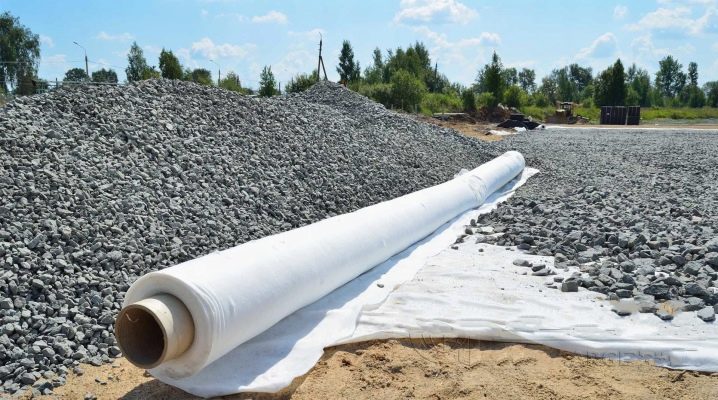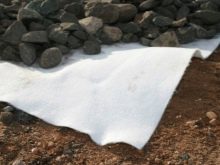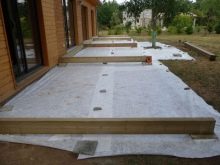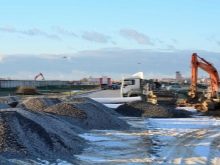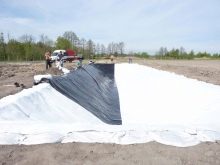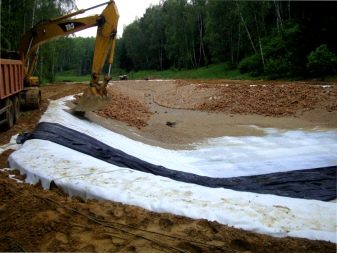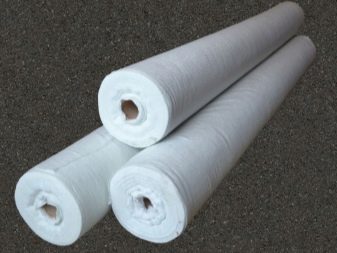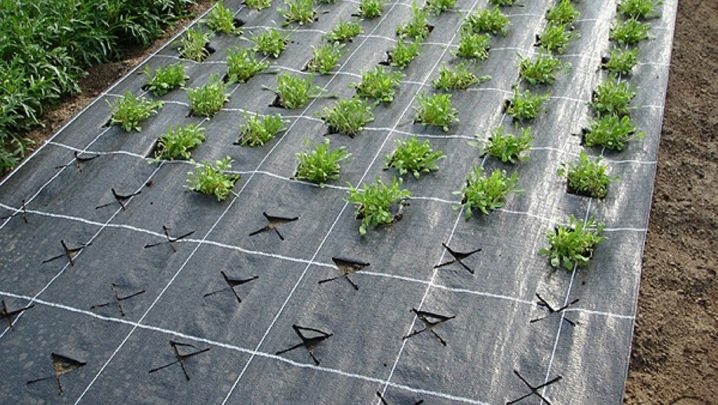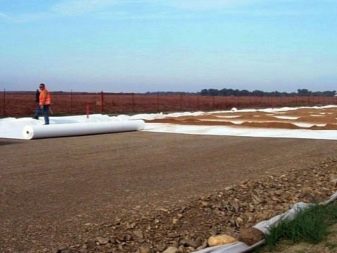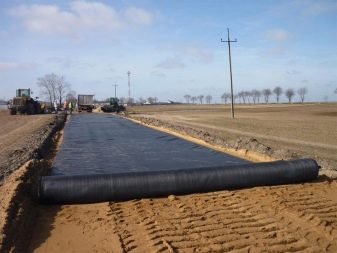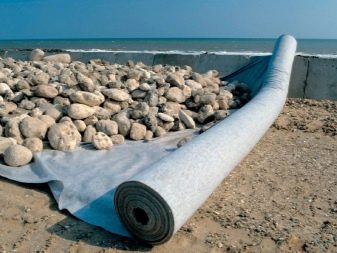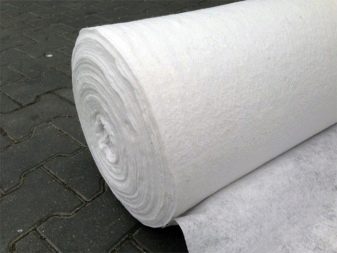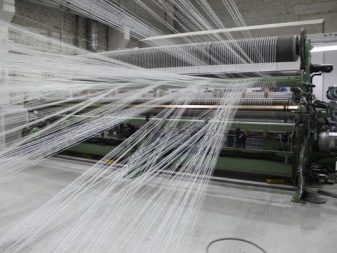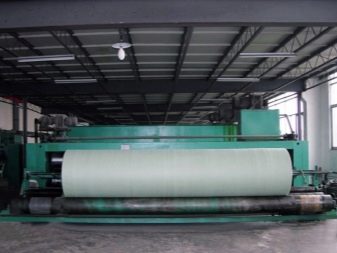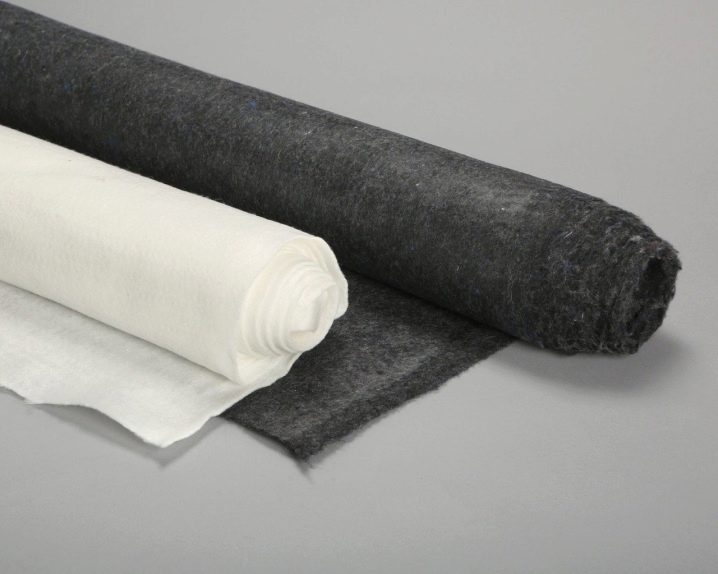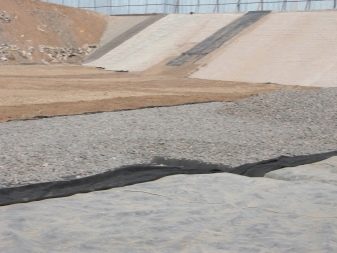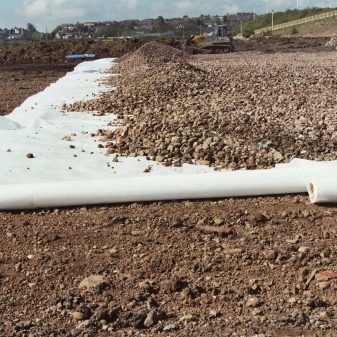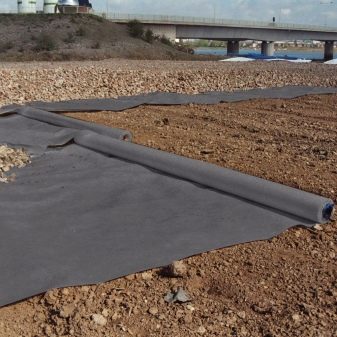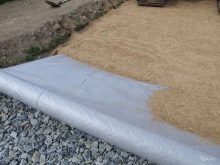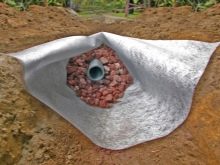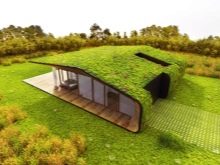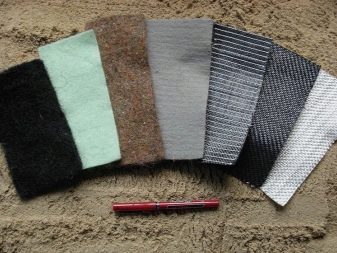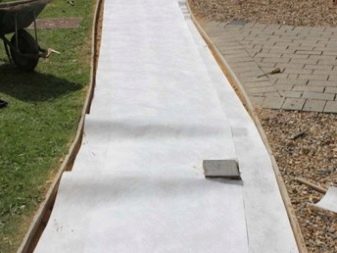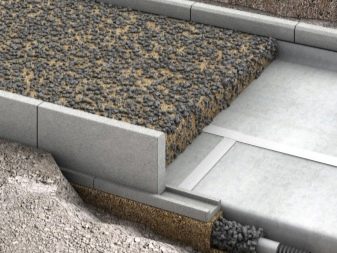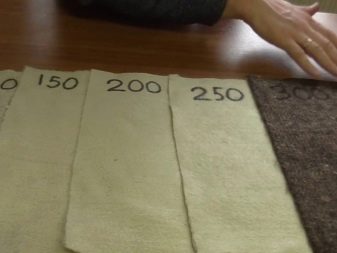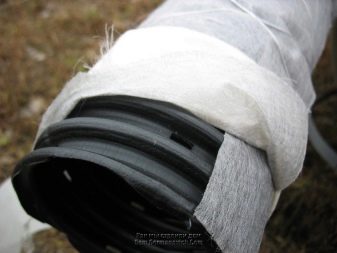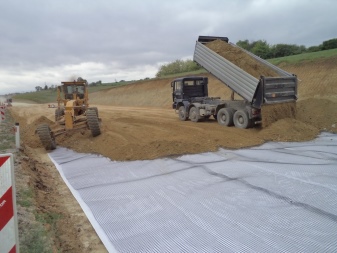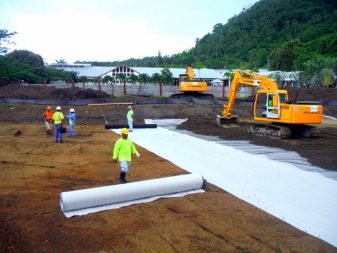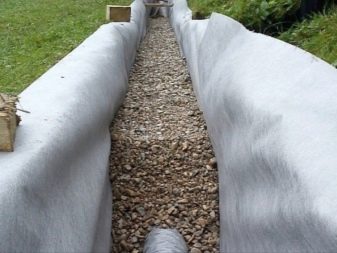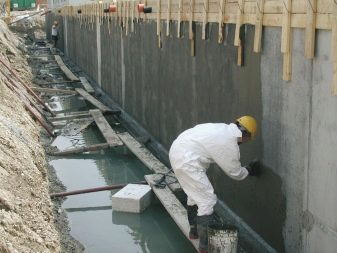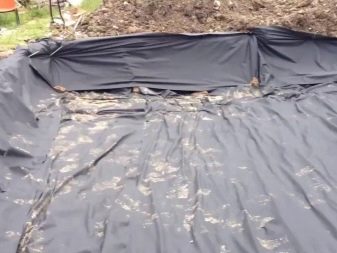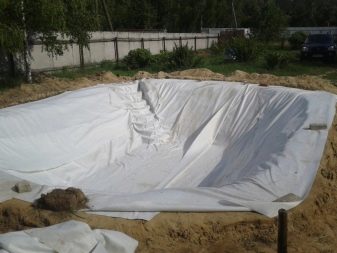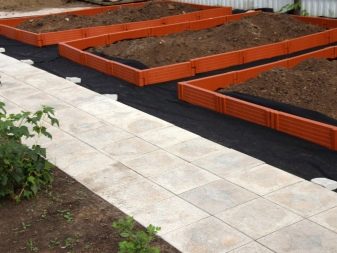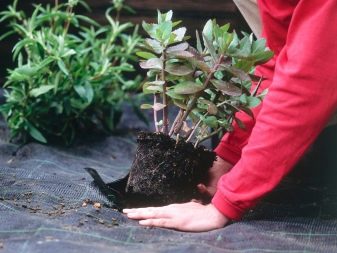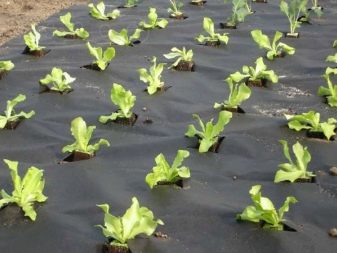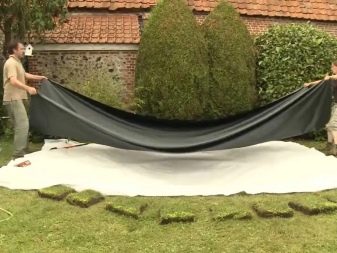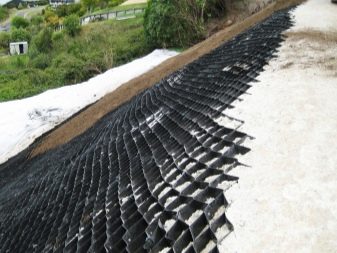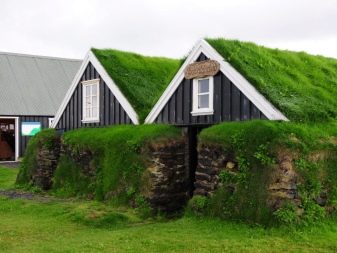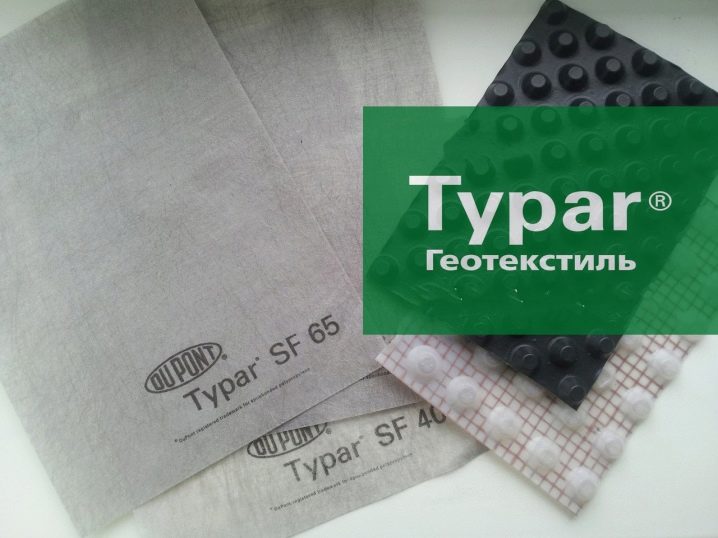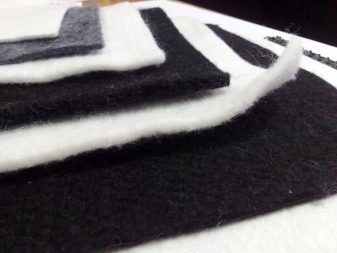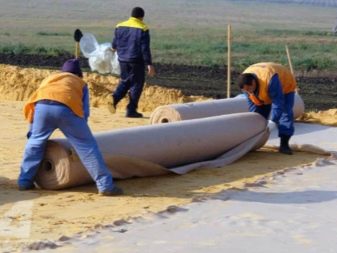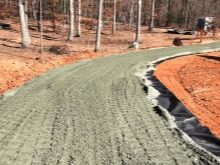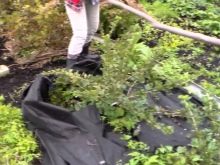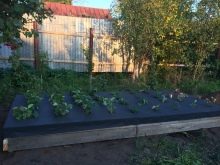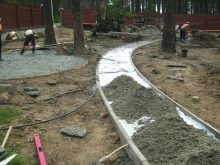Geotextiles: what is it and how is it used?
There is a huge amount of building and finishing materials. But even against this background, geological textiles stand out. It is important to understand the properties of such a coating and the features of its application.
Description
Geotextiles - this is such a coating (canvas), which became widely known only in the last ten years. Previously, even the most experienced developers and homeowners did not know about such products. The benefits of such material is to effectively solve many everyday problems. Construction on sites and their arrangement are considerably simplified.
Geotextiles are created from various threads, and this feature should be paid attention to first.
Special features
Geotextiles are made from a variety of materials, most often it is polyester or polypropylene. Technology involves the use of woven or non-woven methods. Strict adherence to technological standards allows for excellent performance and long-term use. In the distribution network, geotextiles according to GOST can be represented by products of various formats - from 200 to 550 cm. The length of rolls varies from 10 to 150 m, the thickness and density are very diverse.
Regardless of the specific type, this material is different:
- excellent elasticity;
- uniform distribution of the load created by bulk substances;
- resistance to oxidation;
- blocking the weed germination.
The device of geotextile floorings is also attractive due to the fact that it leaks water. The main characteristics of the material allow it to be used in the construction, medicine, agrarian and clothing industries. Reinforced substance makes a much greater mechanical load than the simple option. Safety net is provided even under heavy paving slabs, it will not fall down if a protective layer is laid. Geotextiles are also suitable for the formation of underground drainage systems.
Kinds
A woven geotextile or geofabric is made in the same way as the simplest sewing matter. Weaving threads can be simple or complex, but in any case, it is organized according to a specific scheme. Even just by looking at the patterns formed by the fibers, it is not difficult to detect its specific appearance.
As raw materials take polyester or glass. To the canvas was of high quality, it is impregnated with hardening mixtures.
When processing is carried out, textiles are passed through special calenders. There, the threads partially melt and the outer surface becomes stronger. The cloth of woven execution allows to separate layers of materials, providing:
- track formation;
- hardening of structures;
- uniform load distribution.
Nonwoven geotextiles are made on the basis of polyester and polypropylene fibers, such a cloth is obtained by needle-punching method. In appearance, this product is very similar to simple felt. Work begins with the formation of loose layers, which include fibers of different lengths. Cotton array compacted jagged needles that intertwine the fibers and connect them.The result is a material that effectively passes water through itself.
In addition, igloprobivny tool has high strength and lasts a long time. Additional reinforcement of webs is made by adding geological grids. To obtain a thermally bonded geofabric, the granules are melted and extruded. Then the canvas is covered with microscopic fibers. When such a coating is applied, the material is again treated with significant heat.
Melting the filaments leads to their sintering. The strength level of thermally bonded material is higher than that of other nonwoven varieties. Similar products can be used to separate bulk layers, they are very elastic and can carry significant loads. Geotextile fabric can also be made by knitting. In the production of making rolls from 200 to 520 cm, the winding of the material is from 30 to 130 pog. m
The choice of a suitable option is determined by the scale of the work performed. The less waste, the better the choice. Black and white types of geotextiles are widely in demand today, they are made of propylene with fine pores.Such material is used in large-scale capital construction, landscape design, as well as the cultivation of berries and vegetables.
The advantages of the solution described are:
- optimum density of the product;
- ability to carry load up to 2 kPa;
- the same strength in the longitudinal and transverse planes;
- suitability for filtering;
- perfectly matched elongation for breaking.
Laying this coating is quite difficult, and it continues to easily filter the liquid even when exposed to significant vibration and high soil pressure. Elastic and durable material calmly transfers the action of strong acids, caustic alkalis and many other substances of artificial and natural origin. Black coloring of geotextiles means the possibility of its use in the construction of houses, roads, hydrotechnical complexes. Bulk materials are evenly distributed and will not settle even to a small extent.
Heat-treated geotextiles by default fall into the category of polypropylene-based needle-piercing materials. Its fibers can have a theoretically unlimited extent.Increased load tolerance is achieved due to the homogeneity of the structure of the material. It easily stretches by 50% and does not break to this limit. Water, acids, alkalis do not pose a danger, and plant roots will not grow through such geotextiles.
Such characteristics define the main scope of heat-treated textiles:
- soil reinforcement;
- cover waterproofing membranes from destruction;
- creating a green roof;
- landscape formation;
- drainage of foundation walls in various buildings.
Building geotextiles are not necessarily heat-treated or needle-punched, but it is these varieties that are considered by experts to be the most comfortable and durable. The use of this material in construction helps to construct not only houses, the contribution of geotextiles to the construction of roads, the laying of sidewalks and avenues is great. Along with the construction option, sometimes furniture and packaging geotextiles are also isolated.
To accurately understand what kind of modification is needed, you should familiarize yourself with the basic characteristics of this material. And it is worth starting with the strength of the geotextile canvas.
Indicators and properties
The characteristics of needle-punched thermofastened geotextile with a density of 200 g / m2 are really impressive. As a rule, this material is made from primary polypropylene without additional additives. The purpose of use is the construction of layers and layers of every kind, including the construction of roads. The peculiarity of the feedstock is reflected in the color of this material. Additional heat treatment slightly improves the tear resistance compared to a standard needle-punched solution.
The coating not only can guarantee the strength of 200 kN / m2, but will also quietly hold it under the scorching sun, outdoors for at least 30 days. It is not able to become a container of mold and does not weaken mechanically, even with frost at 60 degrees. Passing and filtering water, such geotextiles do not clog themselves with silt. During the entire period of use, the occurrence of harmful emissions or destruction by ultraviolet rays is excluded. Other technical properties of the material are also high.
Tensile strength (elongation) is 120% compared to the initial length.This means that the substance will cope with the task, even with a very significant mechanical load. Zero hygroscopicity, that is, the minimum absorption of water, allows no doubt about the reliability of the product used. The maximum mass irregularity is only 7–10%. The perpendicular filter coefficient for a load of 2 kPa is 8–20 m / day.
The density of the material directly affects how it will be used. Thus, canvases with a density of 150 g per 1 m2 are in demand among summer residents and owners of homestead territories. By adding 50 grams, you can use textiles as the foundation of foundations, walkways and artificial ponds.
Material with a density of 0.25 and 0.3 kg is equally good in road construction, only for different purposes - the separation of soil and bedding of railways.
Dimensions
The width of geotextile canvases is usually the same and equals 430 cm. But a number of relatively new developments in width reaches 5 and even 5.4 m. The length in almost every case is taken as 100 running meters. As a result, the total mass of a particularly dense textile can be significant. At enterprises, the thickness of the canvases is measured both with a simple layout and under the action of a load of a normalized value, since both indicators are important.
The thickness of geotextiles can vary from 0.8 to 1.8 mm with no load and from 2.4 to 3.8 mm when exposed to a force of 2 kPa. The order of tests and their smallest nuances are very strictly spelled out in state standards, so you should not be afraid of any problems and incorrect assessments.
It is important to bear in mind that thickness and density are interrelated concepts, and for the most difficult conditions of use, thick geotextiles will be more effective than thin ones.
Calculate the right amount
Having dealt with the linear dimensions of the canvases and their technical properties, it is necessary to assess the need for geotextiles for a particular case. This avoids the purchase of both insufficient and excessive quantities of goods. On unprepared grounds such as embankments, a geological canvas is laid between the soles of the slopes along carefully planned relief areas. Overlapping each other canvases should be 200 - 300 mm. When anchors are planned to be placed in a certain area, this indicator grows by another 50 mm.
The overlaps for water outlets are assumed to be 0.15 m. Additionally, the diameter of the pipes themselves, which are insulated by textile units, is taken into account.When mounted on a base, it is useful to reserve 20–30 cm, this will guarantee the absence of any problems during the work. When preparing garden paths and grounds, they usually begin by carefully counting their own area. Then divide the result by area per meter of geological textiles.
What is it needed for?
The geotextile cloth is widely used at construction of the base of various buildings and constructions. His tasks can be varied:
- cover from moisture;
- separation of bulk formations and preventing their gradual silting;
- maintaining the uniformity of the load exerted by buildings on the ground mass;
- improving the quality of crushed stone layers and increasing drainage;
- help reinforcing structures and technical solutions.
Such an application requires a reinforced fabric, which serves for a long time, does not collapse from water and does not rot from freezing. But the reinforcing layer only slightly improves the characteristics of the material itself, and its density is crucial. Therefore, in order to arrange drainage and wipe moisture under the base of the house, you need to take a canvas with indicators of 0.15 - 0.2 kg per 1 square. mFabric weighing 0.25 - 0.3 kg is recommended for the external protection of foundations and the separation of layers of rubble and sand. To disperse the load on the soil and block the action of heaving soil, textiles are used of at least 0.35 kg per square meter. m
Increasing the carrying capacity of the soil and blocking its swelling under poorly submerged structures is achieved by removing up to 100 cm of soil. This layer is replaced by non-metallic loose minerals. Geotextiles made of polypropylene monotone filaments are taken as reinforcements; this step also helps prevent the mixing of earth masses and backfill. The same material is recommended to be used to cover engineering communications from seasonal ground movements.
Lay the drainage layers with geological cloth should be above and below, then they will not be overfilled with silt.
Perforated drainage can also be clogged with muddy sediments. To avoid this, a nonwoven polymeric material is wound with a specific mass of 0.2 kg per m2. The same composition (or slightly less dense) is used to protect the liquid and thermal insulation of strip type foundations.When digging trenches, a textile with a density of at least 0.3 kg per 1 m2 is placed on a sand cushion after tamping. This solution allows you to simultaneously block the wetting of the base of the foundation and make the litter tighter.
If the foundation is built from precast concrete, textiles are glued to the blocks using bitumen mastics or other water-resistant mixtures. It is very important to seal all seams separating adjacent canvases. Grounds on stilts require the use of canvas only in the case of the organization of the base. When the piles are driven in, the gap between them is freed from the ground. On the strip of geotextiles mounted overlay layer:
- gravel;
- sand;
- gravel;
- simple cement.
During the construction of the basement, a hydroprobe material based on continuous polypropylene yarns is mainly used. An alternative to it is the use of needle-punched polyester matter in the form of the same endless fibers. Staple and woven varieties cannot be used for this purpose. Drainage characteristics and material density are of decisive importance in the final selection.The canvases supplied from Western European countries are, on the whole, of high quality, but transport costs make them very expensive.
The choice of a geotextile cloth for a pond has the features. The material that gardeners and gardeners usually take to protect against weeds, in this case, is too thin. It is necessary to take a coating with a greater thickness, externally resembling felt, which has been subjected to thermal sintering. The advantage of this option are:
- strength (difficulty of breaking);
- no risk of rotting;
- relative softness and duplication of relief, the actual adaptation to it.
The role of geological textiles in the formation of artificial ponds is not limited to covering waterproofing from destruction and hardening pits. It is very important that this tool blocks the flowering of water, and also prevents sand and pebbles from collecting in some places. The waterproofing film laid on the bottom prevents water from leaving the reservoir. But only its overlapping with geological textiles avoids a breakthrough in plant protection and sharp edges of stones. No less significant reinforcing function.
Scattering of the walls of the pit dug in the dry sand is almost inevitable. If sandy rocks get wet, they will erode. An additional negative factor is the installation of heavy waterproofing walls. Geopolitically reliably suppresses all these impacts and processes, making the home pond a stable body of water. It will even be possible to move along the substrate, performing various works and without fear of damage to the main part of the pit.
Prevention of water blooming and reducing the need for cleaning the bottom is achieved by dark varieties of pond textiles.
Laying it in any case is made in a prepared bowl. Since it is not possible to predict the exact amount of it in advance, there is no need to purchase the product in advance. Before starting the layout, all sharp objects are removed from the bottom, and those irregularities of the relief, which are not necessary, are sprinkled with sand and soil or removed. As in the preparation of foundations, the work is carried out with a raid of strips on each other equal to 150 - 200 mm.
Garden geotextiles are, first of all, the so-called dornit, or non-woven needle-punched material. Do not confuse it with the trademark "Dornit".Absolute resistance to putrefactive processes and pathological fungi, aggressive means of agricultural chemistry and weeds, the ability to adapt to a given shape makes Dornit very popular.
Applying garden geotextiles, it is possible to provide:
- full drainage of moisture;
- air circulation in the soil;
- delimitation of layers of land, differing in composition and equally necessary;
- the retention of small fragments of soil;
- soil erosion prevention;
- Preventing the negative impact of harmful insects, soil frost or hail.
This material was highly appreciated not only by the owners of gardens and gardens, but also by landscape designers. After all, fencing from weeds the compositions from various plants are needed to the same extent, or even more, than the main plantings. To solve the problem is simple: the geotextiles laid on the soil are equipped with recesses for germination of only useful plants. It can be considered a high-tech analogue of such a procedure as mulching. In addition, by varying the placement of textiles, you can redirect the roots in the desired direction.
Garden geotextiles are good for sheltering fruit crops in the winter or protecting them from sunburn on hot days. But besides agricultural and decorative use, its possibilities are great when strengthening the slopes. A simple earthen slope under the action of precipitation and wind inevitably collapses.
In the absence of protective measures, landslides and landslides will begin very soon. And before that, the surface will lose its harmonious appearance.
A prerequisite for the protection of slopes with a geological sheet is its combination with bulk geogrids. The lining ensures the separation of substances and helps the filler to remain in the cells. A lot of water passes through the textile barrier, so it can be considered a reverse filter. Laying is carried out in the form of layers at different heights, and thanks to it the slope becomes more durable mechanically. Very good results are achieved when tilted to 60 degrees.
Geotextiles are used not only when working with the soil and water bodies, one more purpose of it is the arrangement of the exploited roof. A number of builders and architects have long paid attention to such material, since it successfully resists a large number of harmful factors.
To meet the demand, for example, the company TechnoNicol, which was able to offer a durable and inexpensive needle-punched product, went. Strengthening its performance is due to thermal bonding.
Geotextiles are especially popular in organizing green roofs, where it plays the role of a filtering layer.
Thanks to the non-woven fabric, weeds cannot penetrate into the main structure, and the overall service life grows sharply. On simple flat roofs, geopolitically serves as a reliable protection for waterproofing membranes. It is desirable to cover them not only from above, but also from below. Needle punched rolls are useful as a lining under soft tile placed on the slopes of roofs. The side where the geotextile is placed down does not really matter.
To tie the web, they are welded, stitched, or attached to each other with building brackets. For a welding joint, an overlap of 100 mm is required. The burner will need to drive about 200 mm from the surface; The capture radius of the heated area is more important than the heating force. The porous structure almost completely eliminates the risk of clogging.Even a long increase in the load does not affect the material negatively.
Overview of manufacturers
Having found out the main characteristics of geotextile and its scope, you need to understand the most preferred trademarks. The production can be applied quite different types of raw materials and processing technology, which greatly affects the quality of the finished product. Technonicol supplies polyester materials with a density of 0.1 - 0.2 kg per 1 m2. They are obtained by needle-breaking technology. Width of rolls sold varies from 2 to 6 m.
It is possible to purchase Texpol materials in Russia for a variety of purposes. They have a density of 0.15 to 0.6 kg per m2. Marks "Kanvalan" and "Geotex" imply the use of 100% polypropylene and processing by needle-punching technique. The Austrian concern Polileft and the Belarusian company Pinema can offer a product similar to the Russian with the same characteristics.
Among products from far-abroad countries, geotextiles “Taipar” (Luxembourg) have significant positions in the market. It is made from polypropylene by passing through calenders.The original material is distinguished by the stiffness of the silver fabric and the coincidence of mechanical characteristics, resistance to deformation along and across. According to the developers, guaranteed resistance to a variety of potent substances of artificial and organic origin. Rotting is eliminated, and the service life before decomposition in the soil layer exceeds 100 years.
Geotextiles made in Luxembourg tolerate extreme climatic conditions, including both cold and heat. It does not decompose under the action of ultraviolet. But the resistance of polypropylene to light is still not high enough.
Therefore you should not leave the canvas undisguised in the air for more than 24 hours. No harmful substances are emitted during operation.
The Russian product "Kanvalan-MF" (also non-woven) is made by needle-punching technique. Some products are additionally subjected to calendering, there are products with different levels of breaking load. The term of the guaranteed service is from 50 years, while the various subspecies better cope with specific tasks:
- hardening and protection;
- separation of materials of various fractions;
- filtration of liquids and the separation of substances;
- drainage and demarcation of soil layers;
- erosion prevention on slopes.
How to apply?
Even the best and most reliable geological textiles should be used in the right way. Violation of the use of technology not only degrades the quality of the created layer, but can also cause serious problems. Any underlying surface must be clean, debris and plant roots are unacceptable. Laying textile fabric in most cases is overlapped. Only with the direct indication of the manufacturer or by the decision of experienced engineers can it be done differently.
On a simple surface, the incursion of coils is 0.3 m, and on uneven areas this distance is increased to 0.5 m. Note that the most economical welded joint works well even when only 0.1 m of material is applied. It is recommended not to rely on your own knowledge and luck, but to invite experienced craftsmen who have already had experience with geotextiles before. It is recommended to fill in the canvas with tracked special equipment, and all the work is required to be done delicately.
The slightest mistake will lead to the breakthrough of even the most durable varieties of geotextiles and the need to redo everything all over again.
Useful tips
The name of the product cannot be taken simply as a marketing ploy; it indirectly indicates the characteristics of the product. So, geofabric is great for reinforcement and hardening. At the same time, geopolitically recommended as the underlying layers. For drainage it is unacceptable to use any natural thread, even in the smallest quantity. They quickly rot in the soil and only spoil everything.
Not suitable for drainage and geopolitno, thermally bonded. This product is very dense and is not intended to pass water. The average thickness for drainage structures is optimal: they will not tear, as they are very thin, but they will not be filled with silt, like a large layer.
To apply geotextiles from weeds, all harmful plants are cut off in the spring, but their roots are left in the ground.
15 cm of sand or slightly less gravel is poured over the canvas. It is advisable to do such manipulations where landing is not planned in the coming months. It is best to combine technological weed control and natural soil rest.It is nourished with organic matter that appears when decomposing the remaining shoots. The first landing can be done in a year.
Under the paving tiles textile fabrics should have a density of 0.15 kg per 1 m2. Only under this condition they are guaranteed to transfer all arising loads. Non-woven material, as well as dornit for this task are not suitable.
The minimum recommended roll increment is 200 mm. To go on the sides of the notch textiles should be strictly vertically.
See the following video for how to use geotextiles.
